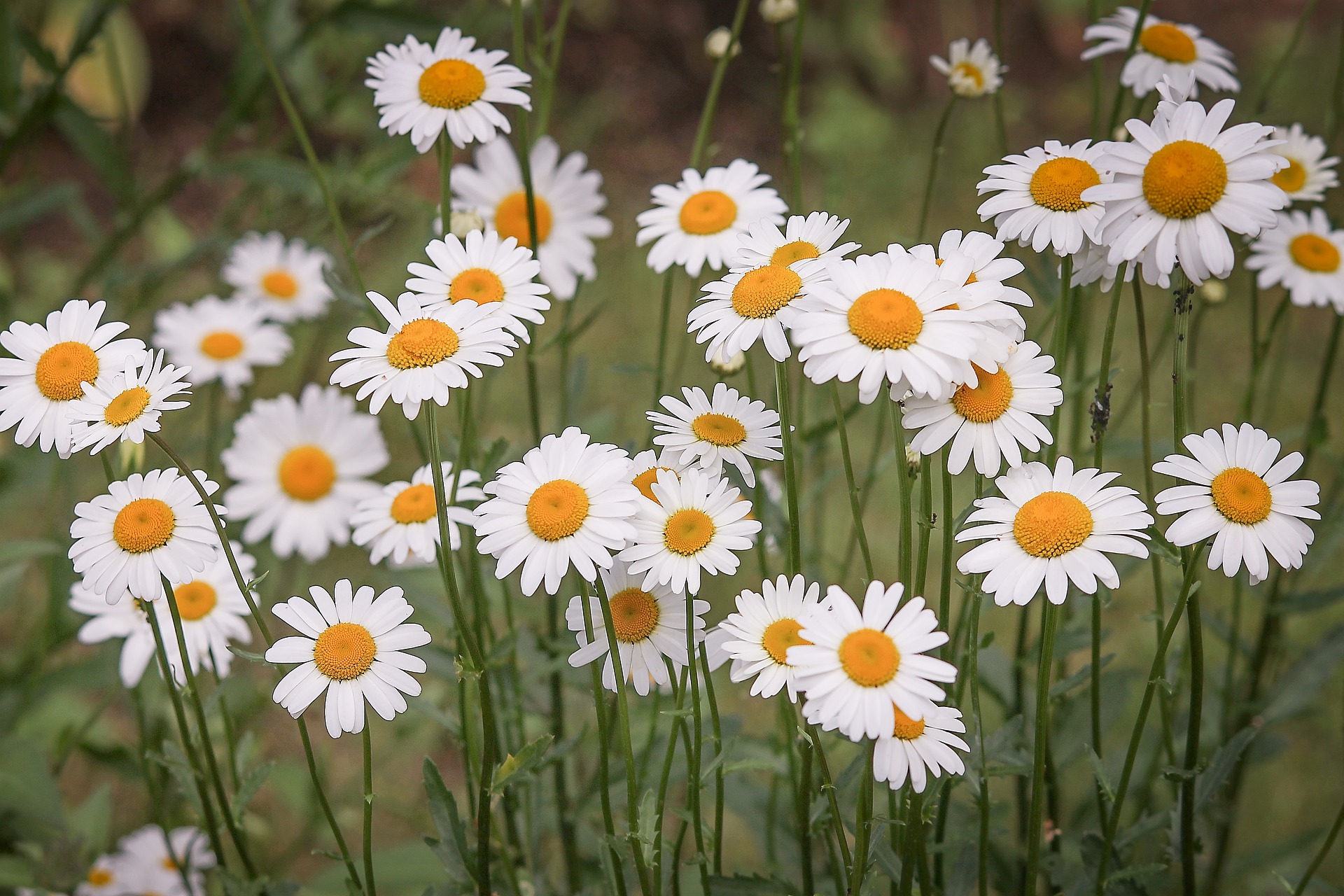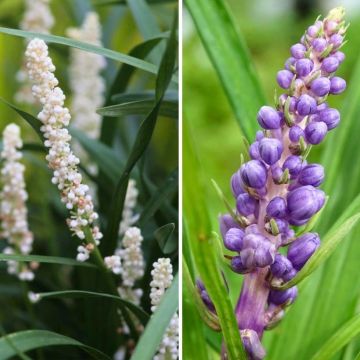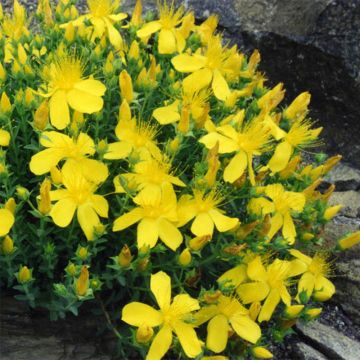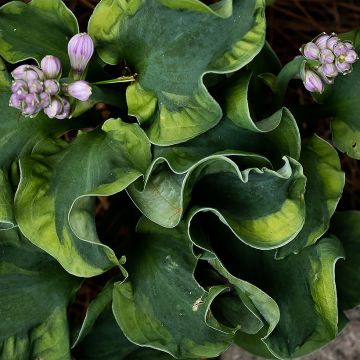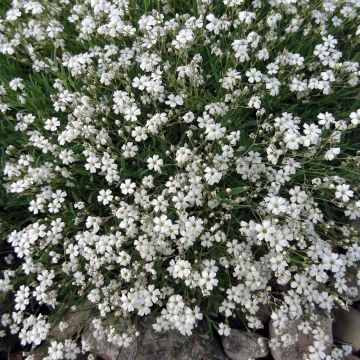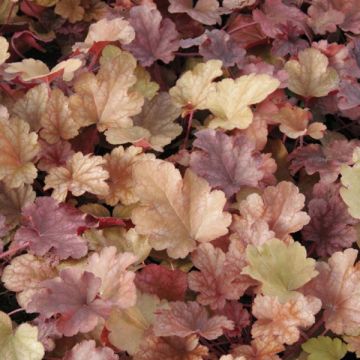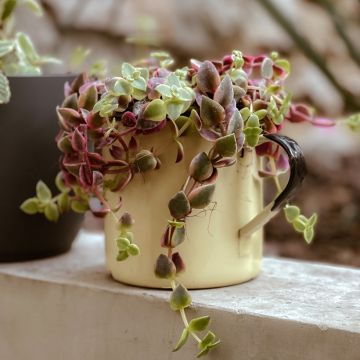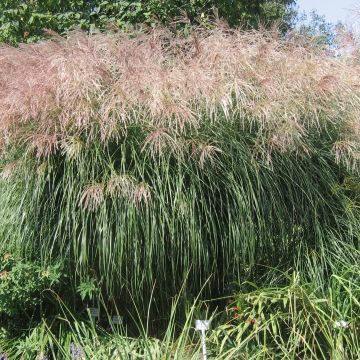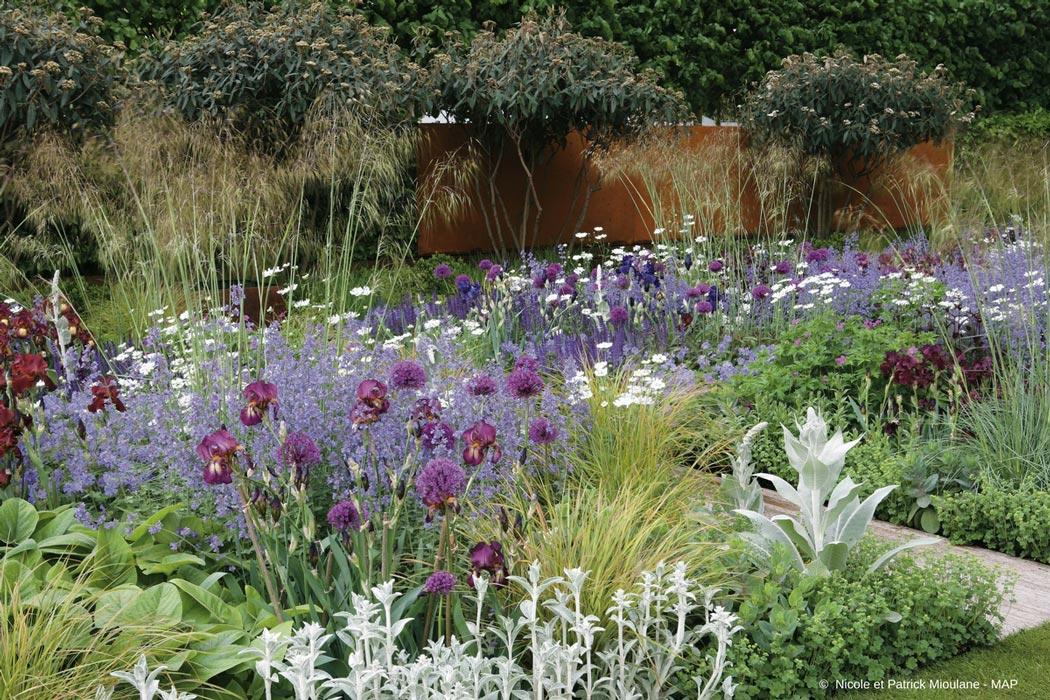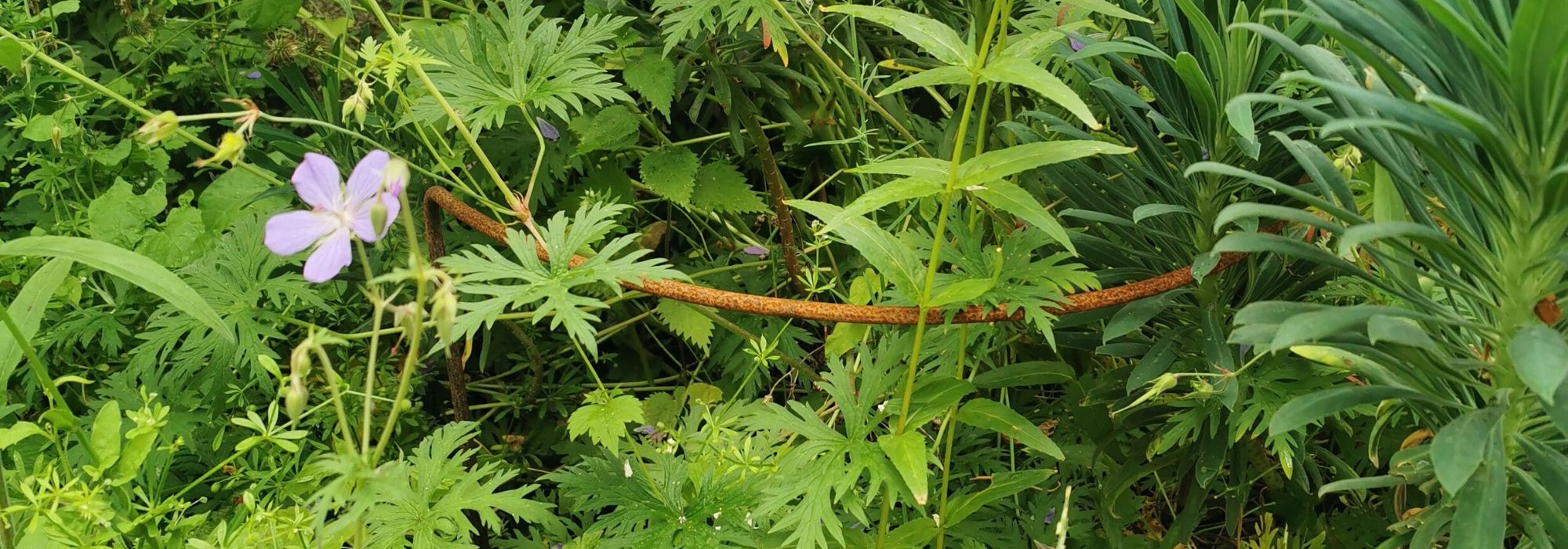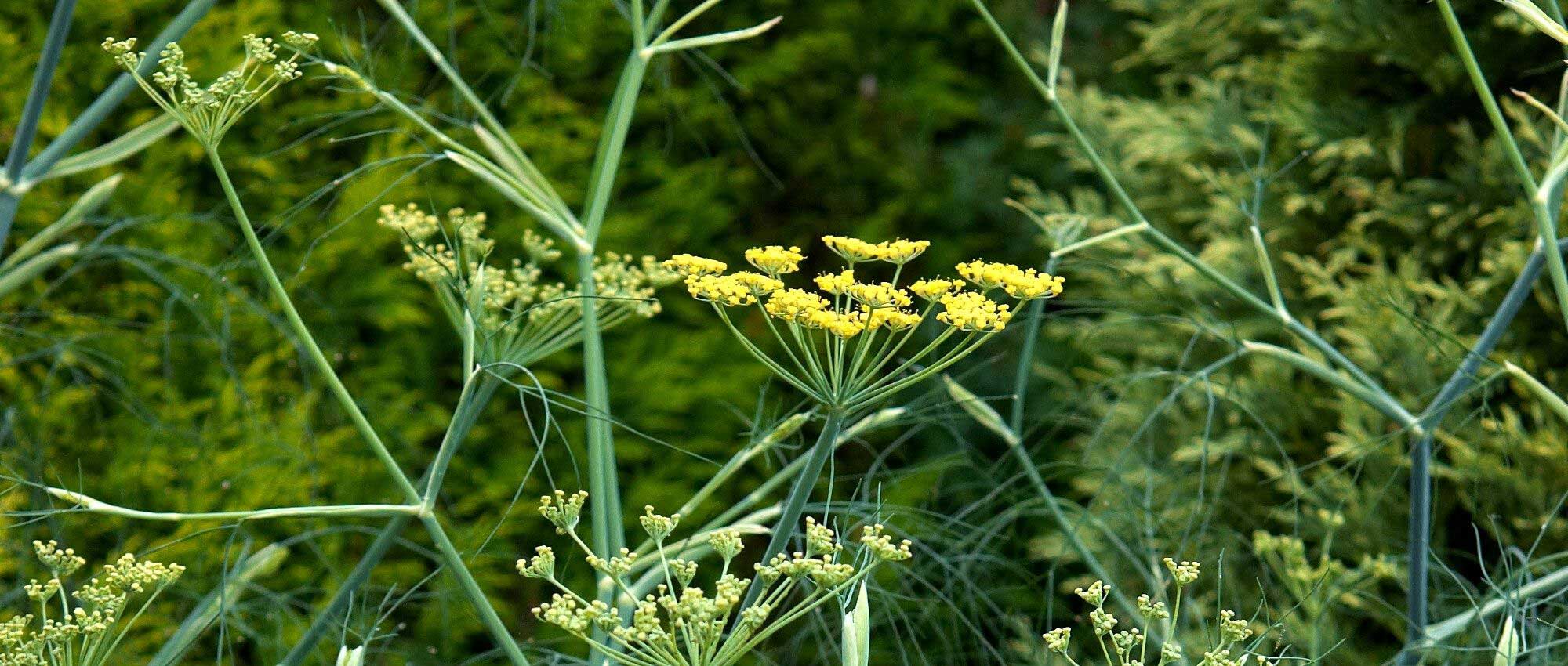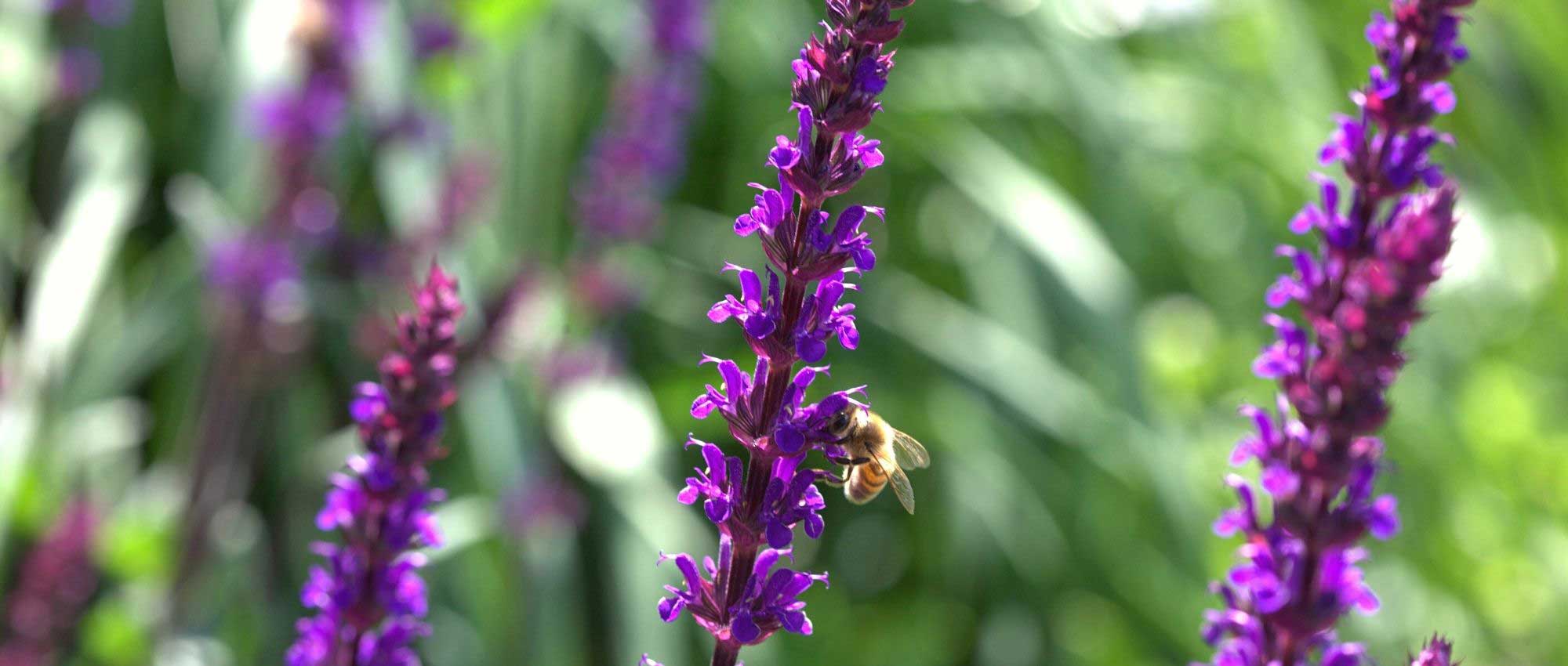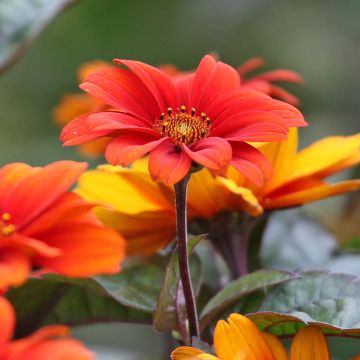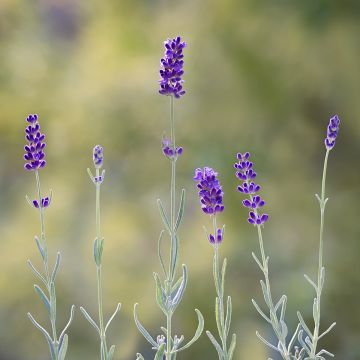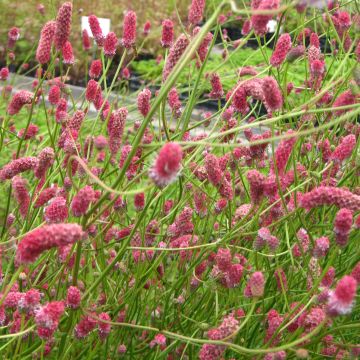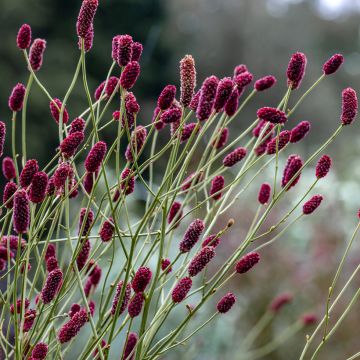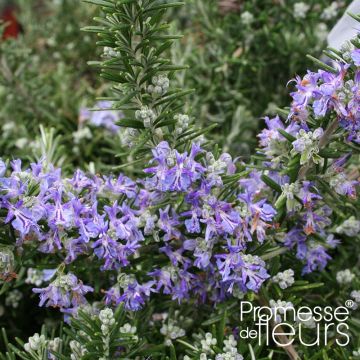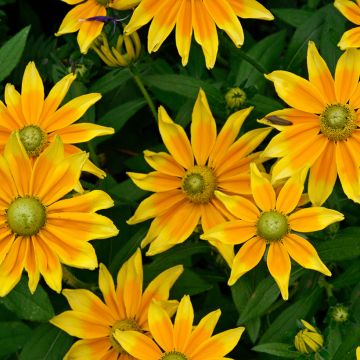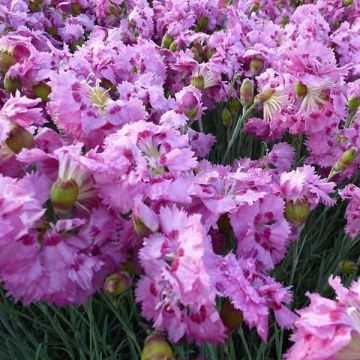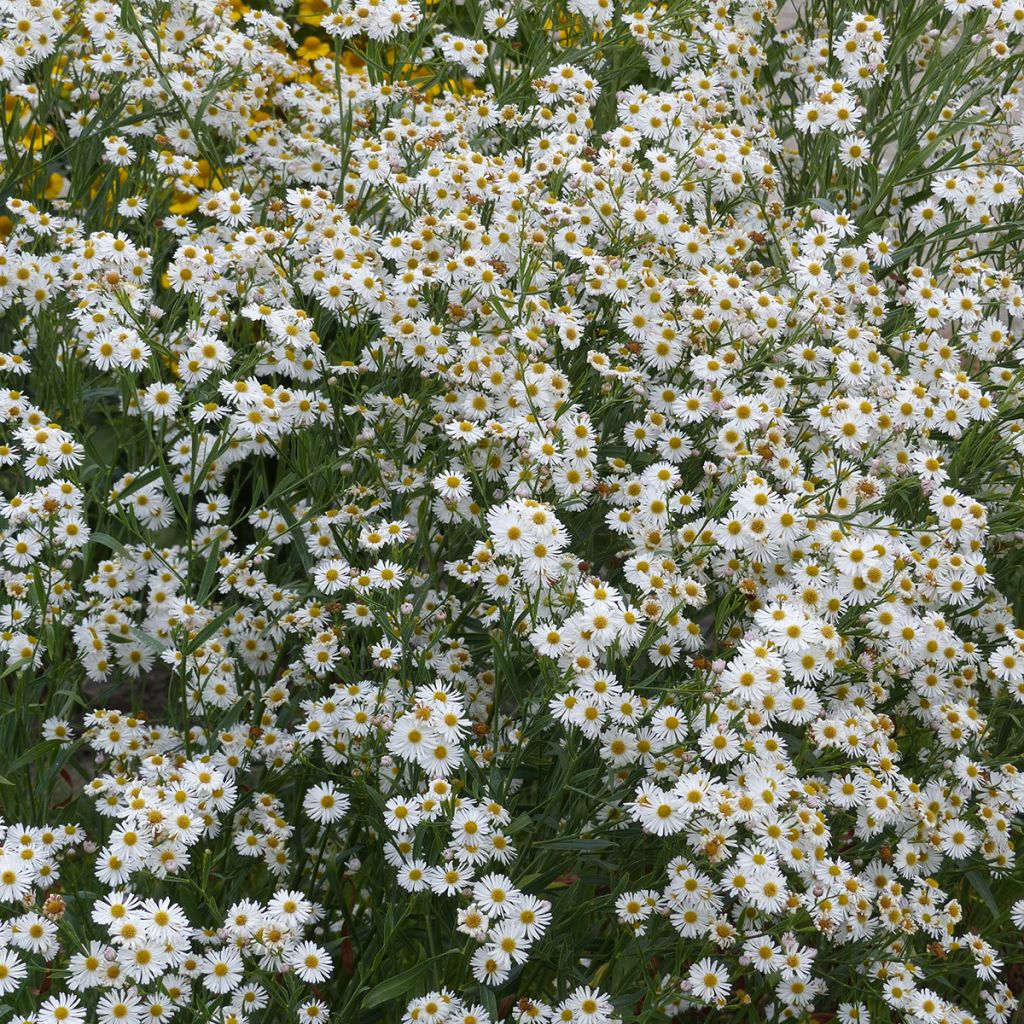

Boltonia asteroides Latisquama
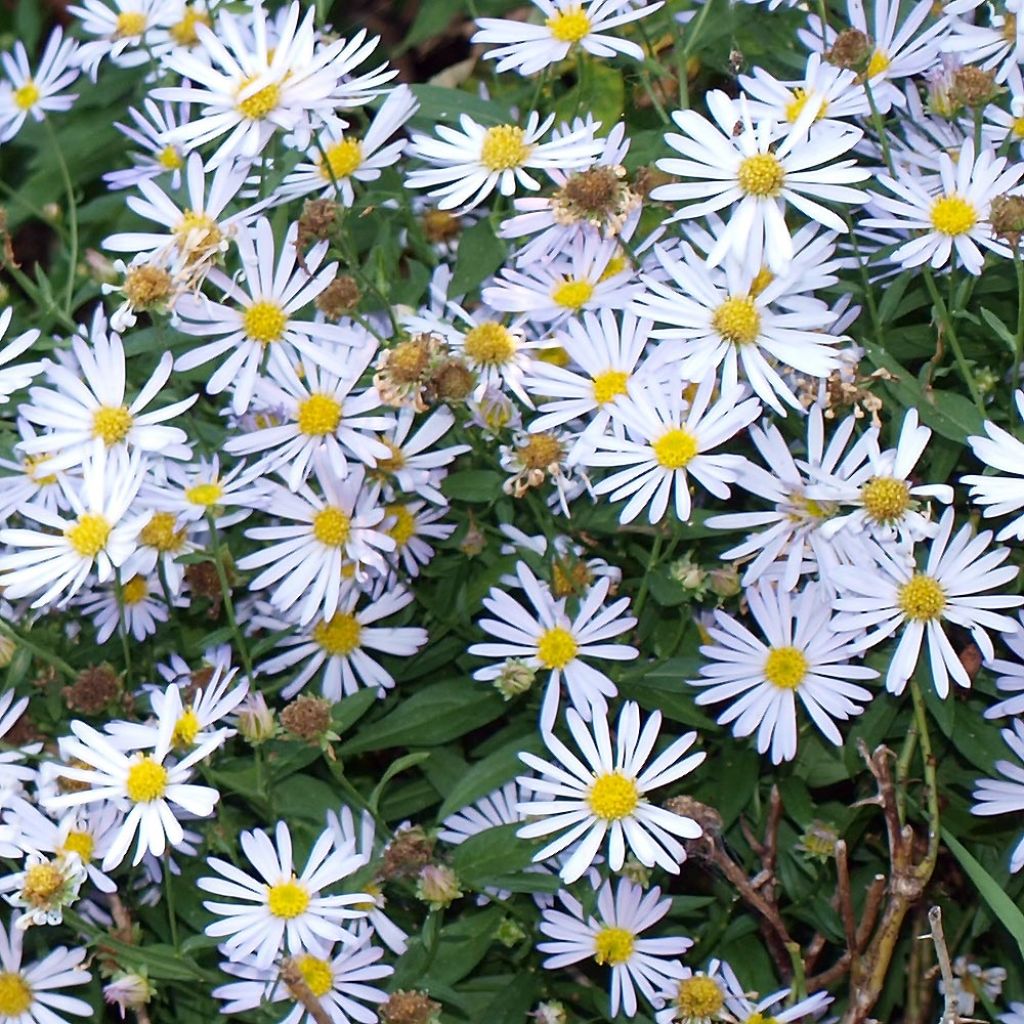

Boltonia asteroides Latisquama
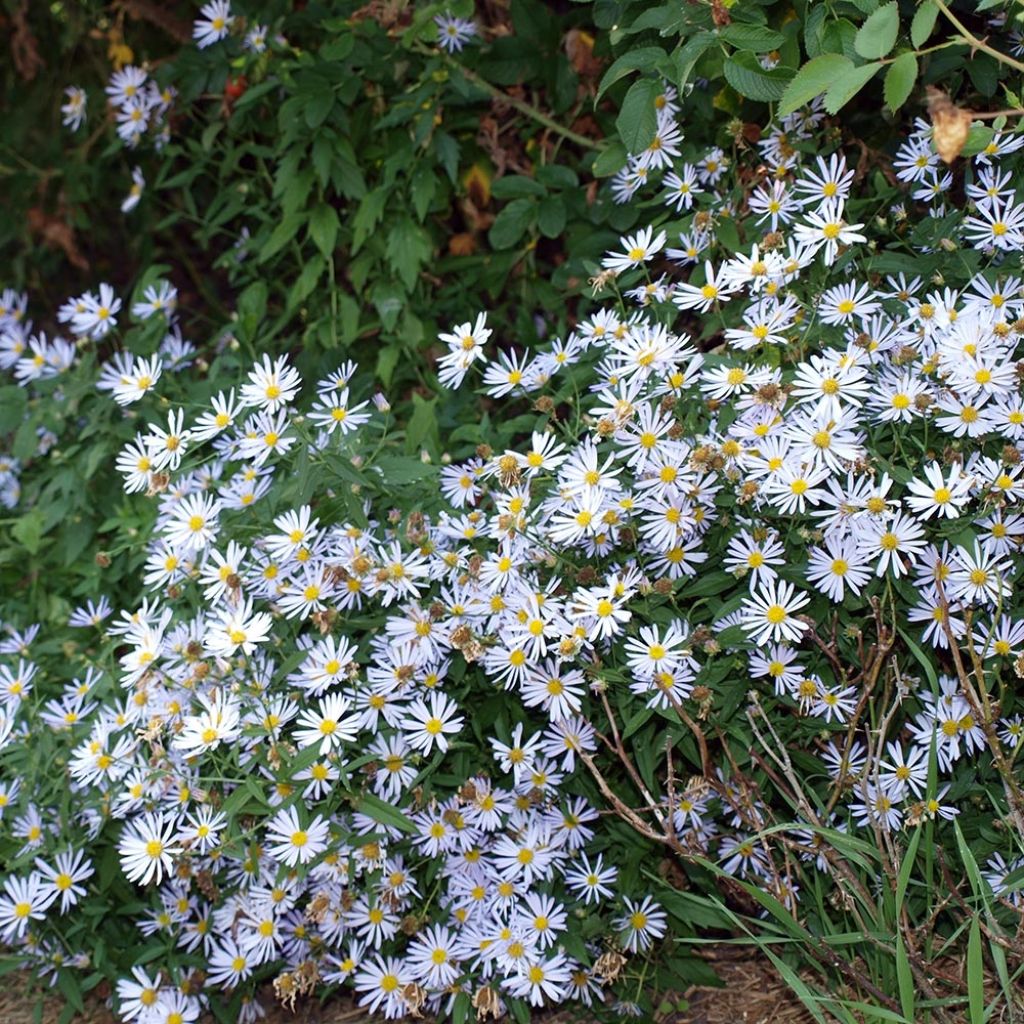

Boltonia asteroides Latisquama
Boltonia asteroides Latisquama
Boltonia asteroides Latisquama
False Aster, False Chamomile
All my promising flower plants have resumed without any problem, it must be said that this year the abundant rains have something to do with it. However, this tall and vigorous stem does not bear any flower buds and the leaves seem quite different from the photo! Perhaps a surprise awaits me, whether it's good or bad???
Martine, 07/07/2021
Special offer!
Receive a €20 voucher for any order over €90 (excluding delivery costs, credit notes, and plastic-free options)!
1- Add your favorite plants to your cart.
2- Once you have reached €90, confirm your order (you can even choose the delivery date!).
3- As soon as your order is shipped, you will receive an email containing your voucher code, valid for 3 months (90 days).
Your voucher is unique and can only be used once, for any order with a minimum value of €20, excluding delivery costs.
Can be combined with other current offers, non-divisible and non-refundable.
Home or relay delivery (depending on size and destination)
Schedule delivery date,
and select date in basket
This plant carries a 12 months recovery warranty
More information
We guarantee the quality of our plants for a full growing cycle, and will replace at our expense any plant that fails to recover under normal climatic and planting conditions.

Does this plant fit my garden?
Set up your Plantfit profile →
Description
Boltonia asteroides Latisquama is a robust perennial that resembles a giant aster. The plant quickly forms a solid and vigorous clump, that is well-branched and tall. It produces flowering stems that reach up to 1.50 m (5ft) above the ground, and transforms into a graceful, light display of hundreds of small lavender daisies with golden centres at the end of summer. The aster-like, rustic and charming Boltonia embodies the spirit of English gardens!
A species native to the northeastern United States, Boltonia asteroides is a plant from the Asteraceae family. Related to large asters, it is also known as False Aster. The Latisquama cultivar, slightly shorter than the type, is also distinguished by its lavender-coloured flowers. It is a vigorous and well-branched herbaceous perennial, with very rapid growth, which will reach maturity in a few months if planted in fertile and damp soil. In summer, large, sturdy flowering stems up to 1.50 m (5ft) tall appear, highly resistant to rain and wind. From August to October, flowers with 2 cm (1in) diameter appear, gathered in 10 to 15 cm (4 to 6in) diameter panicles. This variety forms a magnificent, elegant and airy display of small purple aster flowers. Nectar-rich and pollen-rich, its flowers attract many pollinators. The foliage consists of lanceolate, finely toothed leaves, 10 to 12 cm (4 to 5in) long, which are a beautiful blue-green colour, slightly glaucous and gradually becoming greener. In winter, Boltonia Latisquama takes on the modest appearance of a clump of narrow, simple leaves.
Boltonia, due to its large size, is an ideal ornamental plant for large gardens and informal flower beds. Its height makes it a great choice for the back of flower beds, where it will bring lightness, elegance, volume, and colour. Boltonia Latisquama can be adapted to a small garden by cutting the stems in spring. This way, the flowering stems will reach 1 m (3ft) instead of 1.50 m (5ft). Its autumn flowers allow for the creation of flower beds with staggered blooms, attractive all year round. With its wild appearance, it blends wonderfully with ornamental grasses such as Miscanthus, Turban Aster, Calliope Aster, Autumn Chrysanthemums, large Japanese Anemones, or everblooming shrubby Lavateras. The lightness and grace of its blooms provide abundant flowers for cutting, to create generous rustic bouquets.
Boltonia asteroides Latisquama in pictures
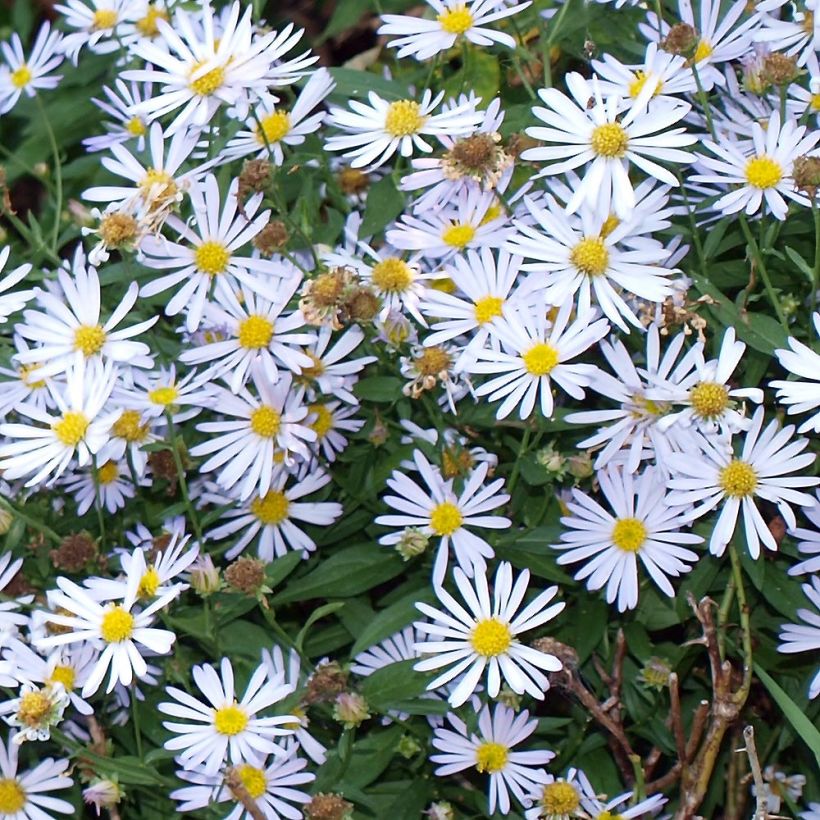

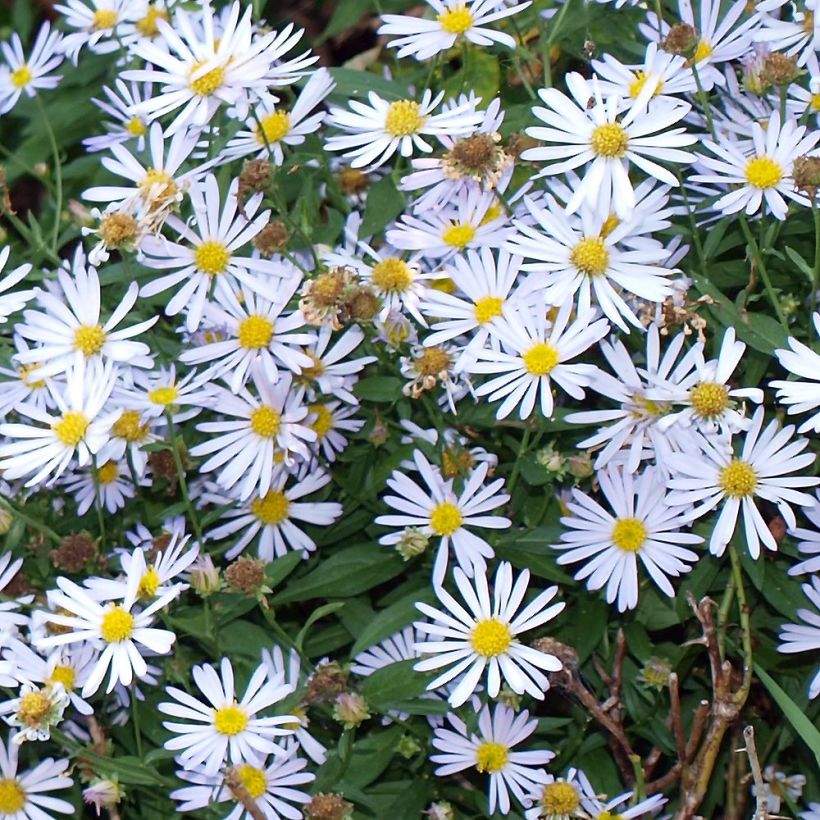

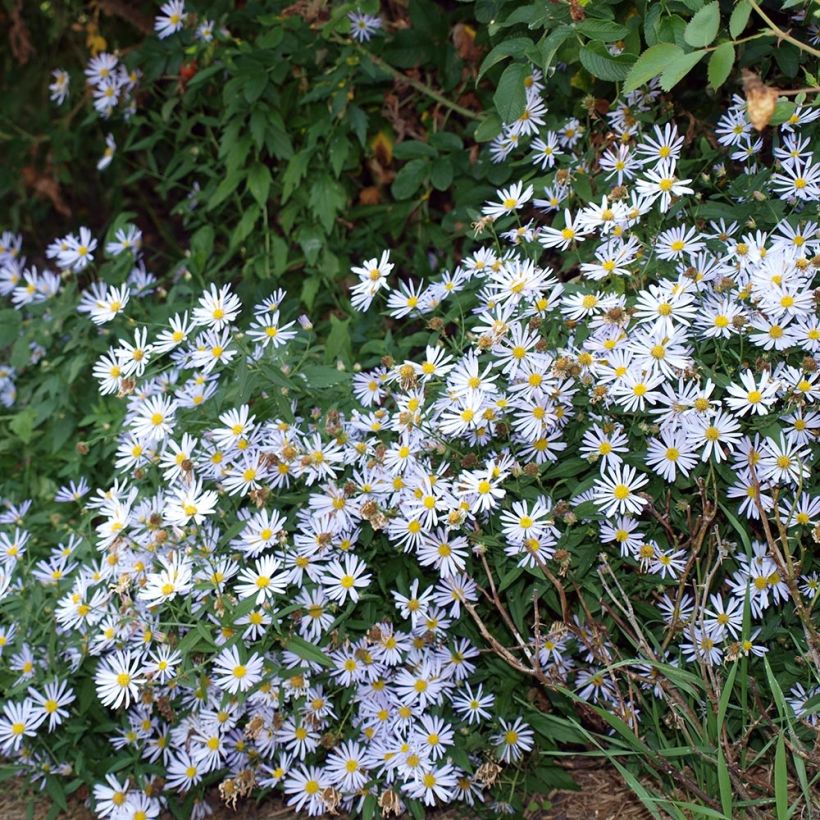

Flowering
Foliage
Plant habit
Botanical data
Boltonia
asteroides
Latisquama
Asteraceae
False Aster, False Chamomile
North America
Other Perennials A to Z
View all →Planting and care
Boltonia asteroides Latisquama appreciates a rich soil which is moist, even damp, but not too heavy and well-drained. It tolerates temporary drought once established. A very hardy, easy and vigorous perennial which is unlikely to be sensitive to powdery mildew. Planting of this False Aster can be carried out in spring or autumn. Not tolerating competing roots well, it requires a planting distance of about 50 to 70 cm (20 to 28in), in relation to neighbouring plants. By pruning the stems in spring, as soon as they reach 30 to 40 cm (12 to 16in) in height, and cutting them back to 10 cm (4in), its height will be limited to 1 m (3ft). Remember to add a slow-release fertilizer at its base in spring, to support its large growth. It may be necessary to place a stake to keep its stems upright, although very often it can do without it at all! Divide every 2 to 3 years, after flowering or in March. Its growth is so rapid that young plants, planted in early spring, will become a vigorous plant by summer, and by the following year, it can be divided and distributed to friends!
Planting period
Intended location
Care
Planting & care advice
-
, onOrder confirmed
Reply from on Promesse de fleurs
Similar products
Haven't found what you were looking for?
Hardiness is the lowest winter temperature a plant can endure without suffering serious damage or even dying. However, hardiness is affected by location (a sheltered area, such as a patio), protection (winter cover) and soil type (hardiness is improved by well-drained soil).

Photo Sharing Terms & Conditions
In order to encourage gardeners to interact and share their experiences, Promesse de fleurs offers various media enabling content to be uploaded onto its Site - in particular via the ‘Photo sharing’ module.
The User agrees to refrain from:
- Posting any content that is illegal, prejudicial, insulting, racist, inciteful to hatred, revisionist, contrary to public decency, that infringes on privacy or on the privacy rights of third parties, in particular the publicity rights of persons and goods, intellectual property rights, or the right to privacy.
- Submitting content on behalf of a third party;
- Impersonate the identity of a third party and/or publish any personal information about a third party;
In general, the User undertakes to refrain from any unethical behaviour.
All Content (in particular text, comments, files, images, photos, videos, creative works, etc.), which may be subject to property or intellectual property rights, image or other private rights, shall remain the property of the User, subject to the limited rights granted by the terms of the licence granted by Promesse de fleurs as stated below. Users are at liberty to publish or not to publish such Content on the Site, notably via the ‘Photo Sharing’ facility, and accept that this Content shall be made public and freely accessible, notably on the Internet.
Users further acknowledge, undertake to have ,and guarantee that they hold all necessary rights and permissions to publish such material on the Site, in particular with regard to the legislation in force pertaining to any privacy, property, intellectual property, image, or contractual rights, or rights of any other nature. By publishing such Content on the Site, Users acknowledge accepting full liability as publishers of the Content within the meaning of the law, and grant Promesse de fleurs, free of charge, an inclusive, worldwide licence for the said Content for the entire duration of its publication, including all reproduction, representation, up/downloading, displaying, performing, transmission, and storage rights.
Users also grant permission for their name to be linked to the Content and accept that this link may not always be made available.
By engaging in posting material, Users consent to their Content becoming automatically accessible on the Internet, in particular on other sites and/or blogs and/or web pages of the Promesse de fleurs site, including in particular social pages and the Promesse de fleurs catalogue.
Users may secure the removal of entrusted content free of charge by issuing a simple request via our contact form.
The flowering period indicated on our website applies to countries and regions located in USDA zone 8 (France, the United Kingdom, Ireland, the Netherlands, etc.)
It will vary according to where you live:
- In zones 9 to 10 (Italy, Spain, Greece, etc.), flowering will occur about 2 to 4 weeks earlier.
- In zones 6 to 7 (Germany, Poland, Slovenia, and lower mountainous regions), flowering will be delayed by 2 to 3 weeks.
- In zone 5 (Central Europe, Scandinavia), blooming will be delayed by 3 to 5 weeks.
In temperate climates, pruning of spring-flowering shrubs (forsythia, spireas, etc.) should be done just after flowering.
Pruning of summer-flowering shrubs (Indian Lilac, Perovskia, etc.) can be done in winter or spring.
In cold regions as well as with frost-sensitive plants, avoid pruning too early when severe frosts may still occur.
The planting period indicated on our website applies to countries and regions located in USDA zone 8 (France, United Kingdom, Ireland, Netherlands).
It will vary according to where you live:
- In Mediterranean zones (Marseille, Madrid, Milan, etc.), autumn and winter are the best planting periods.
- In continental zones (Strasbourg, Munich, Vienna, etc.), delay planting by 2 to 3 weeks in spring and bring it forward by 2 to 4 weeks in autumn.
- In mountainous regions (the Alps, Pyrenees, Carpathians, etc.), it is best to plant in late spring (May-June) or late summer (August-September).
The harvesting period indicated on our website applies to countries and regions in USDA zone 8 (France, England, Ireland, the Netherlands).
In colder areas (Scandinavia, Poland, Austria...) fruit and vegetable harvests are likely to be delayed by 3-4 weeks.
In warmer areas (Italy, Spain, Greece, etc.), harvesting will probably take place earlier, depending on weather conditions.
The sowing periods indicated on our website apply to countries and regions within USDA Zone 8 (France, UK, Ireland, Netherlands).
In colder areas (Scandinavia, Poland, Austria...), delay any outdoor sowing by 3-4 weeks, or sow under glass.
In warmer climes (Italy, Spain, Greece, etc.), bring outdoor sowing forward by a few weeks.






























